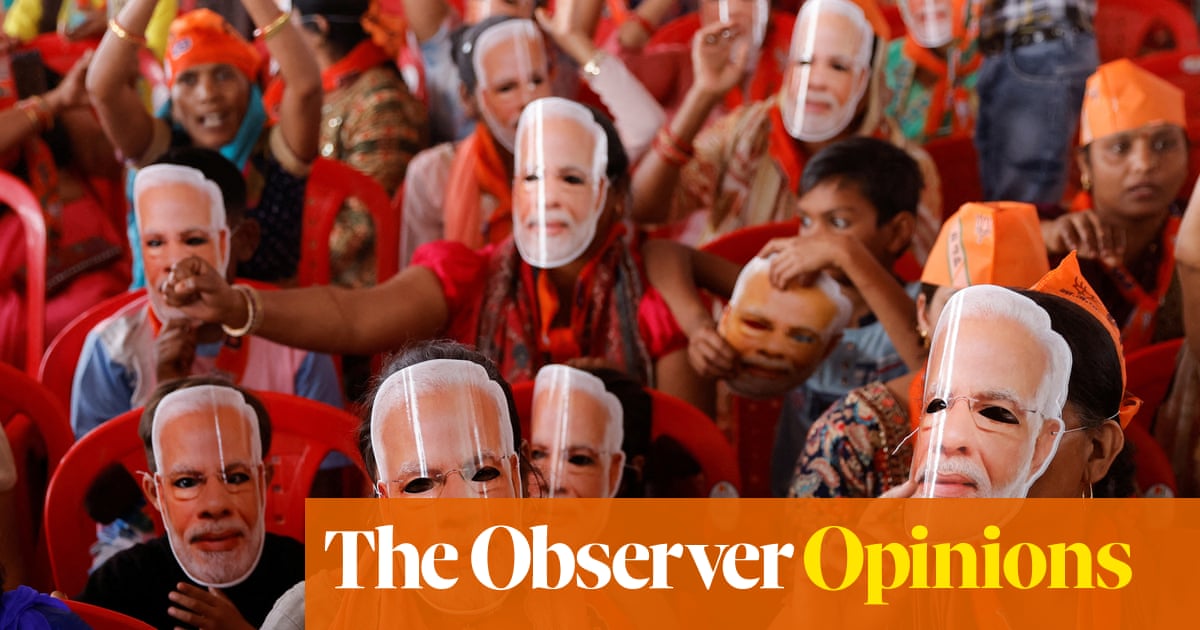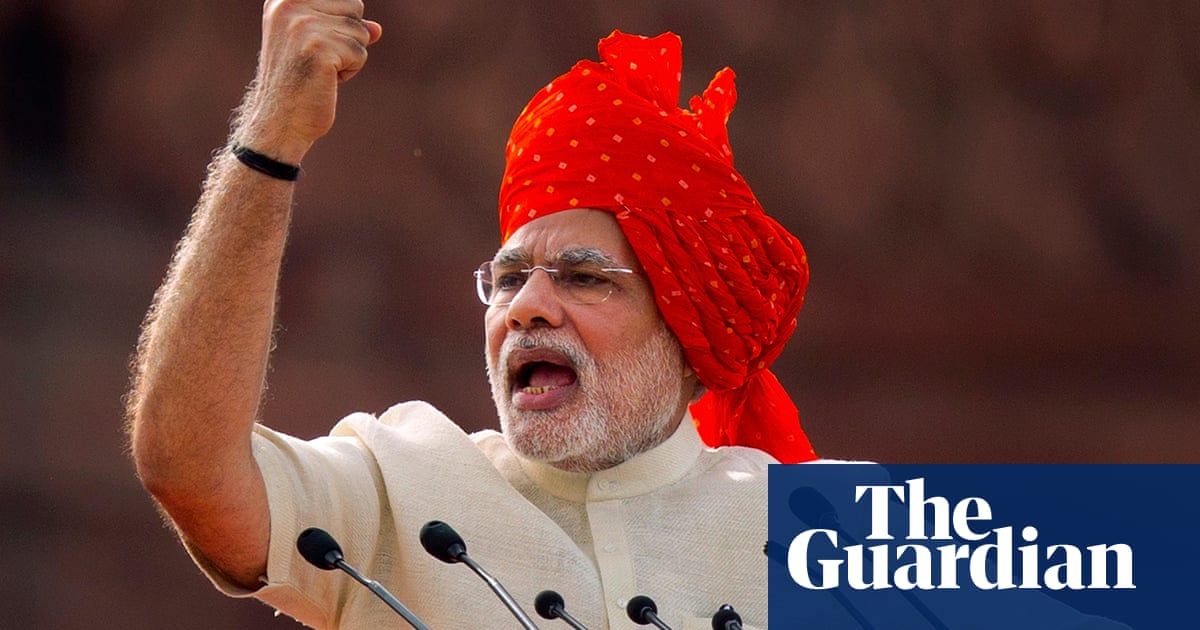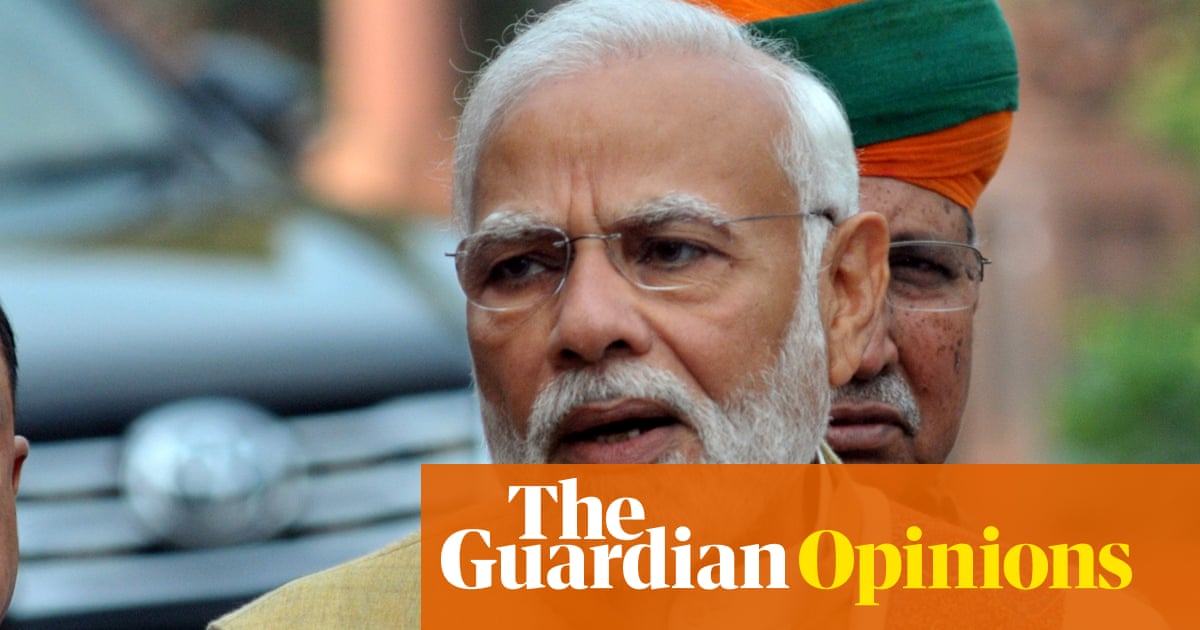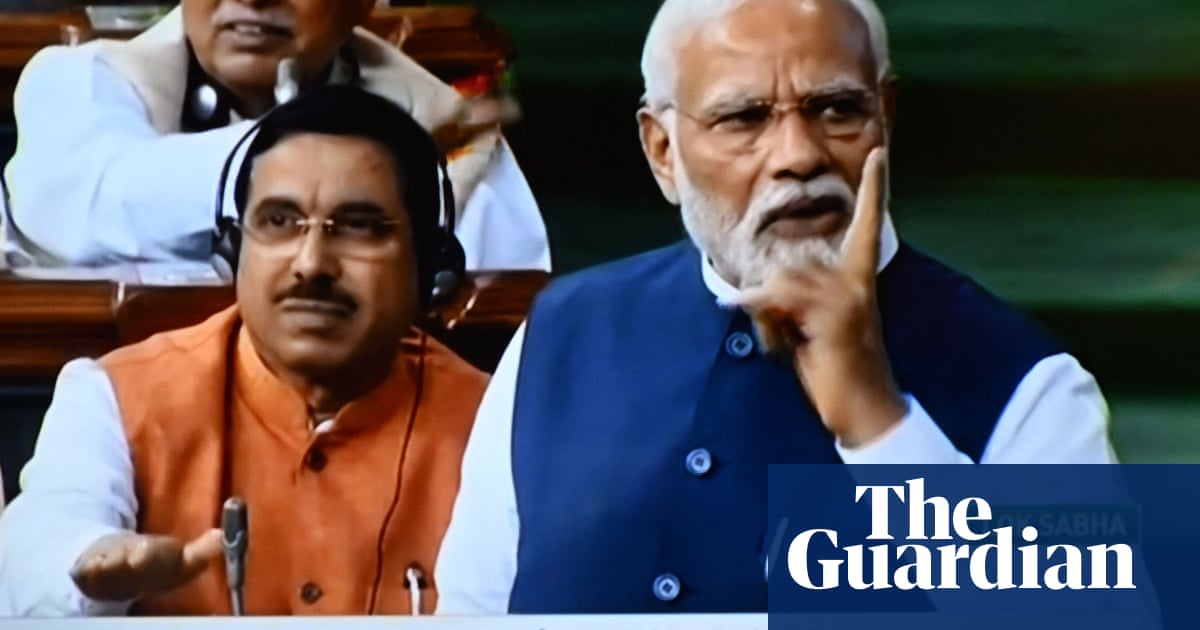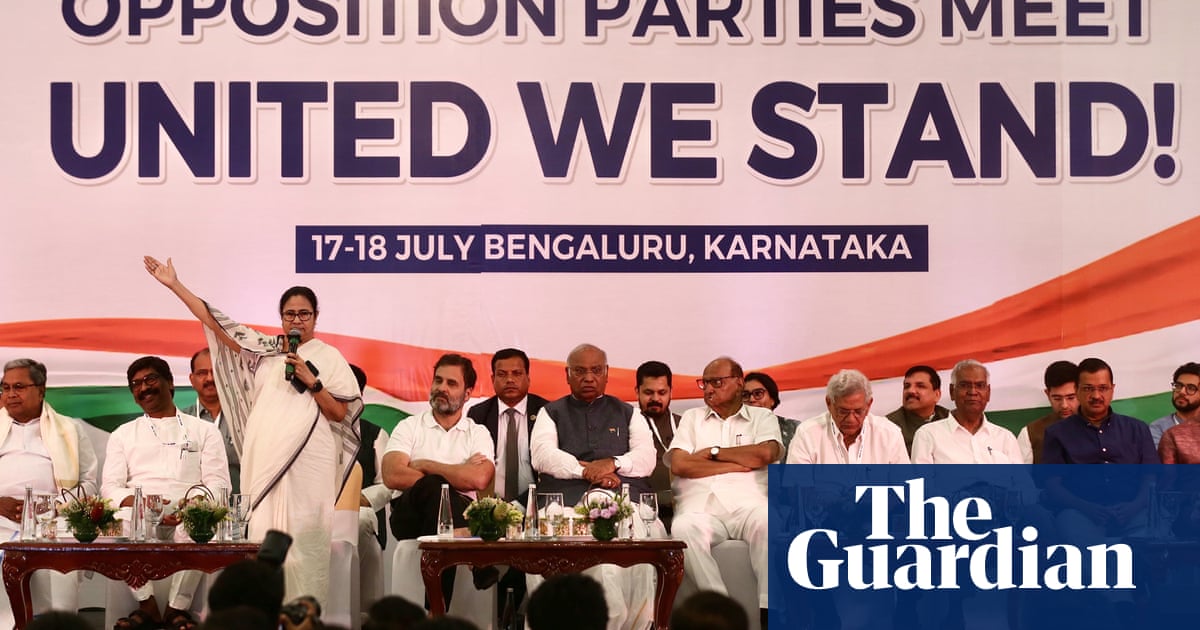
“Good times are about to arrive,” Narendra Modi tweeted to his followers in May 2014. The result of the 16th general election to the Indian parliament had just been concluded. The National Democratic Alliance, led by his BJP party, had emerged victorious with a full majority, upstaging the Congress-led United Progressive Alliance government. The tweet announcing the arrival of acche din was more than a euphoric proclamation of this electoral victory. It hinted at his plans for a fast track to capitalist prosperity, the acceleration of the fabled “Indian growth story”, which would lead the country to a $5tn economy and consequently the high table of the world’s great powers. The promised future was now within reach, or so it seemed.
Yet seven years on, the capitalist growth story of freedoms – economic and political – appears to have gone off script. Consider this: the Indian economy is in troubled waters once again, beset with rising unemployment, sluggish growth and stagnation in terms of human development. The pandemic has only accentuated a downward trend, which began after the 2016 demonetisation shock that overnight wiped away 86% of cash from the Indian economy. A crucial indicator of economic disruption is the increase in poverty levels, a reversal of the trend that is said to have lifted millions out of poverty.
Parallel to this economic fragility is the rise in social strife, as Hindu nationalism becomes the driving force in politics. This shift has been especially striking in the Modi government’s second term, when several core agendas of the Hindu nationalist movement – from the revocation of Kashmir’s special status to the introduction of the Citizenship Amendment Act – were achieved. It is this majoritarian approach to politics that scholars have termed as a kind of “decay”, an erosion of India’s long-established liberal political traditions. The good times of progress and prosperity continue to be postponed, again and again. But what has been readily yielded is a rich dividend to Hindu nationalist politics. The liberalised economy has created an illiberal society.
This seemingly paradoxical turn of events wasn’t exactly on the cards in the optimistic account of India’s 21st-century rise into the role of economic powerhouse. Ironically, the groundwork for this “New India” was laid by the Congress party in the early 1990s with the liberalisation of the economy. At that point, the “opening up” of India’s markets to global capital was enacted in a liberal framework with a stated goal to realise the “dream of a strong united, technologically sophisticated but humane India”, an attempt to align the market economy with the secular, democratic foundations of the post-colonial nation. Yet, it wasn’t Congress that would gain the long-term political capital from this. It was the BJP led by Modi, capitalising on the growing aspirations and anxieties of the new India – the impatience of the middle class to speed up the pace of economic growth – and putting Hindu nationalism into the centre of Indian politics.
This was not entirely unexpected. In fact, Hindu nationalism and market liberalisation have long been locked in a state of mutual indebtedness. This alliance was activated after the widely condemned 2002 Gujarat violence during Modi’s tenure as the state’s chief minister. To repair the reputational damage, Modi’s political persona was recrafted as an embodiment of cultural pride as well as a market enterprise through branded investment strategies that invited foreign and domestic capital. It entailed channelling the readily available free-market formula of making regions/territories market-worthy, and in turn, the infusion of capital became a way of legitimising the political-cultural order.
This is the scaffolding upon which the economy of hope in Modi’s India has been erected. It holds out the double promise of reviving the ancient glory of Hindu culture and the techno-modernity of global capitalism. If these entanglements tend to be overlooked, it is because of the persistent belief that the messiness of cultural politics is a sideshow, unlike the economy upon which the wheels of the nation truly run. Yet the political domination of Hindu nationalism, which persists in the face of an economic downslide, cannot be explained without addressing the way economic and cultural issues interact, and the political emotions that emerge from this collision.
Recall how the Modi government removed the special status of Kashmir in a dramatic move in August 2019. The change in Kashmir’s constitutional status – a core issue of Hindu nationalist politics – was accompanied with an official announcement to host an “investor summit” that would bring progress and prosperity. This news was welcomed by India Inc, which tends to root for strong leaders who “mean business” in more ways than one. The region had been opened for capital even as it was being shut down in a curfew and internet blackout. Ironically, the promised summit is yet to materialise, but the integration of Kashmir into a potential capitalist and Hindu nationalist geography has energised Modi’s political constituency.
What has emerged in the shadow of free markets is a different kind of transaction: the strong leader facilitates the mobility of capital into an investment-ready territory, and the capital, in turn, ensures that the nation’s “domestic affairs” remain a no-go territory. This is what renders the nation-state into a tightly governed enclosure that remains open (to capital) and closed (to ideas) at the same time. In the absence of the promised economic miracle, it demands more time, discipline and even stoicism from citizens to wait it out. Modi’s Hindu nationalist politics act as a kind of cultural compensation for the “good times” – which are always just out of reach. The question is how long this balancing act can be maintained, and what happens if and when it falls apart.
Ravinder Kaur is a historian of contemporary India. She is the author of Brand New Nation: Capitalist Dreams and Nationalist Designs in Twenty-First-Century India







